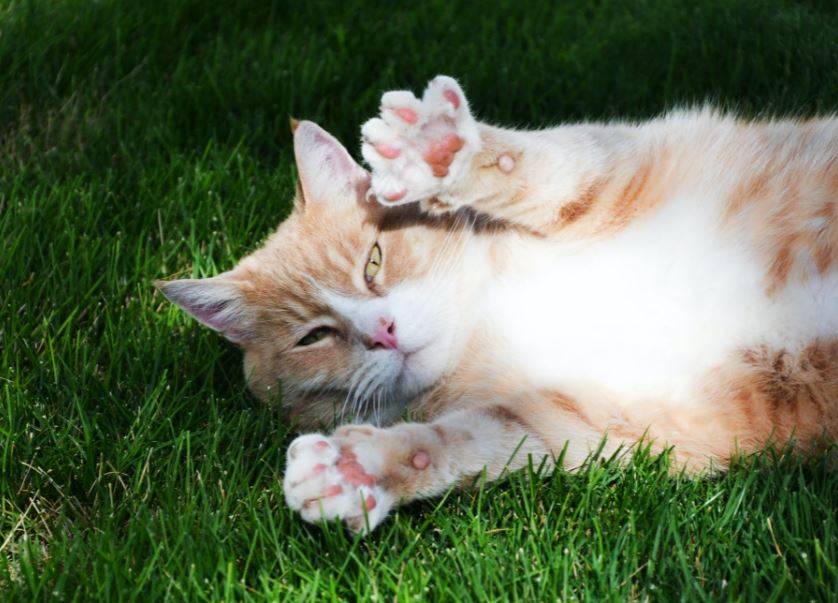Feline lovers know how their cat’s claws shouldn’t remain ignored, given how good and sharp they are in scratching your furniture, couch, carpet, rugs, and curtain. For that reason and some others, some people decide to have their cats declawed to make it easier to live with their beloved furry felines.
Truth to be told, the choice is never easy as declawing cats remains a controversial issue among many cat enthusiasts. While the surgical procedure may have its benefits, there are also significant drawbacks to consider revolving around the cat’s overall welfare.
If you are curious why so, continue reading below and we’ll discuss more about declawing, its plusses, and minuses, as well as its possible consequences, and some safer alternatives, which can greatly help in case you get stuck in a decision to declaw your cat.
What is Cat Declawing?
Cat declawing, formally called onychectomy, is a surgical procedure veterinarians perform, removing the distal phalanx, the last knuckle or bone of a cat’s toe. It entails taking off the entire nail bed, leaving no chance for the claw to grow back after a successful and effective surgery. As a result, cats end up with smaller feet sans the claws.
Traditionally, declawing is done by using dog nail clippers or a scalpel and trimming off the toes at the knuckle. Today, CO2 lasers and local blocks are now available, lessening the bleeding and pain and making the process more humane.
As declawing is a surgical procedure, it involves putting the cat in general anesthesia. Cat’s paws are usually tender after the surgery with recovery time usually lasting up to two full weeks. In case the cat suffers from any complication, healing may take longer.
Cat declawing is banned in the UK, Australia, Brazil, Israel, and New Zealand, as well in several other countries. In the United States, some towns and cities passed legislation prohibiting owners from declawing cats. Only New York has statewide legislation banning the procedure, while some other states have legislation waiting to be passed.
Still, declawing is a popular procedure across the U.S. and in Canada, as well as in Europe. To fully grasp the varying views about the procedure, here are plusses and minuses of declawing cats.
Plusses of Declawing a Cat
Declawing a cat has many perks. However, such benefits are more for the cats’ human guardians rather than for cats themselves. In fact, the procedure provides little to no medical advantage, only physically benefiting those cats who have a pre-existing condition.
- Property damage protection: Cats have a natural tendency to scratch due to various reasons. It can be for stretching and flexing their feet and claws, eliminating their claw’s dead outer layer, or for marking their territory using marks and scent using the scent glands on their paws. Yet, while it’s a natural need for them, it can cause significant damage to furnishings, requiring hefty amounts for repair. Without claws, cats can longer shred or shred belongings.
- Family protection: Cats may randomly scratch people as a form of social play or aggression. Regardless of which, a swipe may hurt your family. While declawed cats can still lash out scratches, they will no longer inflict physical damage. Thus, protecting your family, members especially children and the elderly, those who are on anticoagulant blood thinners, and those who are more vulnerable to infection.
- Better human-feline relationship: Without the fear of being scratched, owners tend to bond with their cats more, deepening the quality of the relationship in the long run.
- Decreases euthanasia and abandonment: As cat scratching becomes an annoying problem for some owners, they are forced to abandon their cats in shelters. Sadly, shelters cannot sustain all the needs of these cats, making euthanasia a choice. By eliminating the problems caused by scratching, declawing indirectly decreases abandonment and euthanasia rates with more owners keeping their cats.
Minuses of Declawing a Cat
Cats take all the minuses of declawing, as all the consequences are experienced directly by them and not their beloved owners. Some of these cons are even detrimental to a feline’s overall welfare.
- Painful surgery: Declawing also requires the incision of all the nerves and tendons around it. As this is very painful, pain management must be administered, before, during, and after the procedure. While cats may look good at tolerating pain, it’s hard to tell how uncomfortable and unpleasant the experience is actually for them, despite the appropriate pain medication provided.
- Surgical complications: As with any surgical procedure, declawing exposes the cat to risks of many complications, which include nerve damage, reopening of wounds, infections, hemorrhaging, abnormal gait, and temporary paralysis. That’s why it’s also important to have a cat’s onychectomy done by a reliable vet as poor technique increases the chances of sustaining those complications.
- Reduced natural ability: Cats use their claws for jumping, climbing, fighting, and protecting themselves. Declawing cats reduces these natural abilities, immensely affecting the felines’ lives. While they can no longer scratch valuable furniture, they won’t be able to scratch anything as well. They won’t be able to stretch their feet and bodies the same way as before, as the claws they use as ballast are no longer there. Moreover, they can no longer be allowed to go outdoors, as they can be vulnerable to predators.
- Emotional stress: Waking up from surgery without your claws can affect a cat emotionally. Some cats even have a difficult time adjusting, still undertaking behaviors as if they still have their claws. Not to mention that it would also take a toll on how they interact with other animals, impacting the way they play or socialize. Thus, further adding to the stress they can experience.
- Indirect solution: Some owners resort to declawing their cat, not knowing it’s not a direct solution. If the issue with the cat is her aggressive behavior, removing her claws won’t solve her behavioral issues and may even aggravate the problem more.
Safer Alternatives to Declawing Cats
Declawing has many safer alternatives that won’t affect cats’ well-being but are effective enough to keep them from scratching. These include behavioral training, catproofing one’s home, regular nail trimming, using vinyl nail caps, providing cats an enriched environment, toys, a cat tree, and a scratching post. None of these are invasive and will usually only require some little extra time, effort, and cost but will undoubtedly benefit cats a lot more.
Final Words
Still, the decision to declaw your cat is up to you. Just make sure to take all the plusses, minuses, and other options available into consideration and you’ll know what’s the best for you, your cat, and your home.

